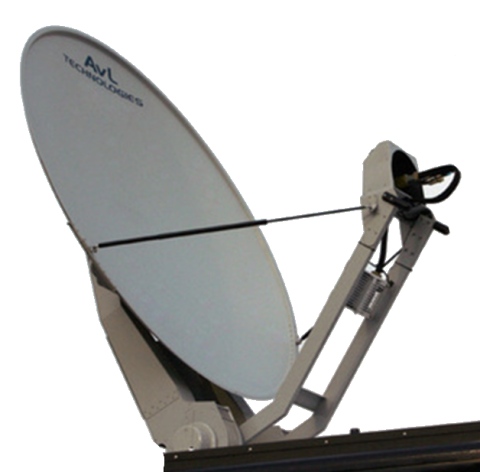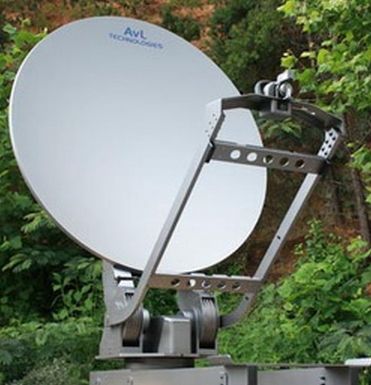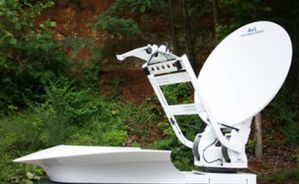AVL Technologies 1878C Vehicle Mount C-Band SNG Antenna System
Intelsat, Panamsat, Eutelsat and Asiasat approved, Ideal for C-Band uplink trucks and VSAT trailers
1878C C-Band SNG VSAT
AVL 1878C is distinguished by it's C Band capabilities. This mobile broadband antenna shares many features with it's predecessor the 1878K Mobile VSAT antenna, the system is a motorized, palletized C-band antenna utilizing the patent-pending AvL Cable Drive positioner available only from AvL Technologies.

Auto-Tracking
It is comprised of a 1.8m solid reflector and an auto-acquisition controller for accurate, dependable, satellite communication worldwide. The antenna is designed to provide high transfer rates for voice, video, and data and provides connectivity in remote environments worldwide where larger aperture antennas are desired to combat rain-fade and weaker satellite signals.

1878C Specs |
|
|
Reflector |
Offset 1.8m AvL Engineered Composite Reflector |
|
Feed |
Corrugated Horn, .6 F/D |
|
Optics |
Offset, Prime Focus |
|
Drive System |
Patented Roto-Lok® Positioner |
|
Mount Geometry |
Elevation over Azimuth |
|
Polarization |
Rotation of Feed |
Electrical RF |
|
|
Frequency Range (Standard) |
|
|
Frequency Range (Insat) |
|
|
Gain (Midband) 2-port |
|
|
VSWR |
|
|
Beamwidth (degrees) |
|
|
First Sidelobe Level (Typical) |
|
|
Radiation Pattern Compliance |
|
|
Antenna Noise Temperature |
45° K at 10° Elevation |
|
Polarization |
Linear |
|
Power Handling Capability |
80 watts at TX Port |
|
Cross-Pol Isolation |
|
|
Feed Port Isolation - TX to RX |
|
Controllers |
|
|
Standard |
Three-axis Jog Control & Display with Auto-stow |
Optional Upgrades |
|
|
Semi-automatic Operation |
Drive to calculated position based on operator entered vehicle location, heading, plus satellite (longitude or listed) |
|
Automatic Operation |
Drive to calculated position based on auto GPS and Flux- Gate Compass data and satellite peaking with LNB signal |
|
Auto -acquisition |
One-button acquisition of selected satellite including peaking and optimization of cross-pol (certified for auto-commissioning on most satellite services) |
|
Size |
Two Rack Units for Semi-automatic & Automatic Controllers |
|
Input Power |
110/240 VAC, 1 ph, 50/60 Hz, 10/5A peak, 1A continuous |
Mechanical |
|
|
Az/El Drive System |
Patented Roto-Lok® Cable Drive System |
|
Polarization Drive System |
Motorized Gear-drive |
|
Travel |
|
|
Speed |
|
|
Motors |
24V DC Variable Speed, Constant Torque |
|
RF Interface |
|
|
Electrical Interface |
25 ft. (8 m) Cable with Connectors for Controller |
|
Manual Drive |
Handcrank on Az and El Axii, Leads from 12VDC Pol Motor |
|
Weight |
360 lbs. (163 kgs) |
|
Stowed Dimensions |
104 5/8 L x 74¼ W x 25 5/8 H inches (266 L x 189 W x 65 H cm) |
Environmental |
|
|
Wind |
|
|
Pointing Loss in Wind |
|
|
Temperature |
|
Homeland Defense and security, Mobile Satellite News Gathering, Remote Internet Access, Military and Government Communications, Disaster Recovery, Remote Telemedicine




